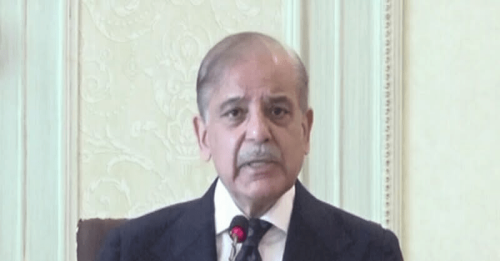The fall in Brent crude prices to an almost five-year low of $63 per barrel — around half of its June high of $115 — has sent shivers among energy investors.
But the worse might yet come. Morgan Stanley warned last week that oil prices could slip to as low as $43 a barrel, and investment firm UBS remarked: “The journey to $43 per barrel could happen quicker than what many out there think”.
But keeping the woes of investors of energy stocks aside for a moment, the fall in crude prices has been a blessing for the economy. “Pakistan imported petroleum products and crude worth $14.8bn in the fiscal year ending June 30,” reminds Muzammil Aslam, MD of Emerging Economies Research. He pointed out that the figure is based on $100 a barrel.
Calculations by this writer show that potential savings due to a 40pc drop in crude prices would work out at $5.6bn, or a whopping sum of Rs571bn for the full fiscal year.
A meeting of the Cabinet committee on energy last week, chaired by Prime Minister Nawaz Sharif, was told that the country had saved Rs27bn in the past month due to the decline in oil prices, as the cost of electricity generation — heavily dependent on furnace oil (FO) — had receded. It was also decided to replace FO-based independent power producers (IPPs) with gas-based or coal-fired plants.
While the big decline in oil prices would help reduce subsidies, circular debt and the fiscal deficit, investors in the heaviest capitalised oil and gas sector moan the evaporation of their wealth, as stocks across the energy chain are taking a steep plunge.
‘Every $10 per barrel reduction in oil prices is expected to translate into a potential Re0.60/kWh reduction in the generation cost’— analyst Reema Waheed
Aftab Hussain, MD and CEO of Pakistan Refinery Limited, told Dawn that the decline in crude prices would trim the profitability of energy companies, principally because of inventory losses.
Reporting on Pakistan State Oil — the country’s largest oil marketing company (OMC) — Foundation Securities analyst Reema Waheed wrote: “The company may have booked inventory losses of Rs1.5-2bn in the first quarter of this fiscal (1QFY15) due to a $25 per barrel reduction in oil prices”.
However, Waheed added that falling oil prices could also provide some relief to OMCs, as the reduced cost of power generation may lead to a possible curtailment of the tariff differential subsidy.
“Every $10 per barrel reduction in oil prices is expected to translate into a potential Re0.60/kWh reduction in the generation cost,” the analyst said.
It is amusing to note that of late, many brokerage firms have scarcely discussed falling oil prices, which are pulling down prices of oil and gas stocks.
When pressed, a stockbroker admitted that it was not of much use to be on the ‘sell side’. Investors, particularly foreign funds, can be brought round to buy stocks when they see a potential rise in prices, not the other way round, he stated rather optimistically.
The ‘electricity sector’ on the Karachi Stock Exchange commands a market capitalisation of Rs115bn and consists of 17 listed power generation companies. The most expensive stocks in this segment — Kot Addu Power Company and Hub Power Company — closed Thursday at Rs76.41 and at Rs74.50 per share respectively.
Altern Energy, Kohinoor Energy, Lalpir Power, Nishat Chunian Power, Nishat Power, Pakgen Power and Sitara Energy are other stocks trading at various premiums to their respective par values. Meanwhile, Ideal Energy, Japan Power, K-Electric and Southern Electric Power Company are considered the laggards. The new kid on the block, Engro Powergen Qadirpur, which was listed on October 27, ended Thursday at Rs41.60.
An energy expert stated that since most IPPs are operating on an internal rate of return of 17-18pc, the government absorbs losses when oil prices are rising; so it will pocket gains when prices fall.
However, IPPs operating on the ‘pass through’ formula would reap rewards. “Furnace oil prices have fallen by 20pc since October 31, and the government has passed on the benefit of declining international oil prices in the local market”, says Irfan Saeed, energy analyst at InvestCap. He believes it to be a blessing for the sector’s liquidity.
He added that the average fuel cost component of IPPs remained at Rs14.1/kWh for November. “The average fuel cost component of FO-based IPPs is likely to settle down at Rs12.9/kWh in December and at Rs10.8/kWh in January 2015. And any further decline in furnace oil prices may yield more benefits by further lowering the generation cost.”
The government is currently providing power subsidy mainly under the head of price differential claims — the difference between the generation cost and the average price charged to consumers. The decline in the generation cost would ultimately bridge this gulf, and hence lower the power subsidy.
“On the macroeconomic front, we believe the reduction in the cost of generation will also enable the country to somewhat satisfy the IMF’s condition of reduction in power subsidy, and therefore bode well for the progression of the Extended Fund Facility,” says the Foundation Securities analyst.
Published in Dawn, Economic & Business, December 15th , 2014













































